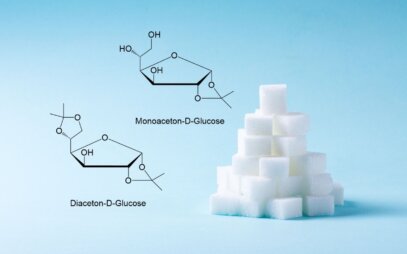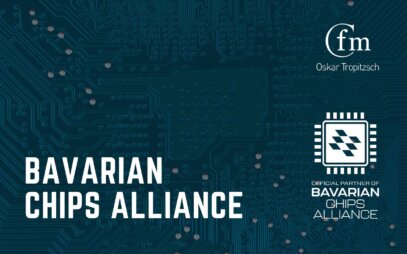Metal soaps – versatile use in a wide range of industries
Metal soaps are salts of fatty acids. Most commonly used is stearic acid in combination with different metals such as calcium, zinc, magnesium or lead – but with the exclusion of sodium and potassium salts. The fatty acid salts of the sodium and potassium salts are water-soluble and are called soaps. Metal soaps are poorly […]
Read moreGA2023 Congress Dublin
We look forward to meeting you at the GA2023 Congress, July 2-5 at Trinity College Dublin. Dr. Sandra Miklos will be on site. You are welcome to make an appointment for a personal meeting here.
Read moreARABLAB LIVE 2023
We look forward to meeting you at ARABLAB from 19 to 21 September 2023 in Dubai. Michael Schaeffler will be on site. Feel free to attend his lecture on rapamycin on September 20 at 1:00 p.m. at the Labworx Theatre. You are welcome to make an appointment for a personal meeting here. Get more information […]
Read moremTOR inhibitor rapamycin (sirolimus) as a treatment option for tuberous sclerosis
Tuberous sclerosis is a very complex, incurable genetic disease. Within Germany, around 8,000 people are affected, and one to two million people worldwide. Tuberous sclerosis affects almost all organs. It leads, for example, to benign tumors or malformations in the brain. In addition, renal angiomyolipomas often form. These are also benign tumors of the kidney […]
Read moreElement of the Month June: Aluminum
Aluminum (Al) is known as a silver-white, ductile and relatively soft metal. It is involved with 8.1% in the structure of the earth’s crust and is therefore – before iron – the third most common element. The metal always occurs in a bound form. In the mid-18th century, a German chemist discovered alumina as a […]
Read moreSugars: from food industry to drug manufacturing
When it comes to sugar, people first think of its function as an energy supplier and sweetener in food or, in a negative context, of the common disease diabetes mellitus. But sugar is more than an energy supplier and nobody can live without it. Most probably only a minority is thinking of a group of […]
Read moreElement of the Month May: Nickel
Our Element of the Month cannot be destroyed or created. It is known by the symbol Ni and atomic number 28: we are talking about nickel. Nickel is found in many everyday objects. For example, it is used as an active material in lithium-ion batteries and can therefore be found in smartphones and electric vehicles. […]
Read moreCfm Oskar Tropitzsch Member of the BAVARIAN CHIPS ALLIANCE
Bavaria is one of the leading locations for the semiconductor and microelectronics industry in Europe. The corona pandemic or the war in Ukraine have shown how important it is to make Bavaria and Germany more independent when it comes to chip supply chains. The delivery bottlenecks in this area were and are a clear warning […]
Read moreBIO International Convention, Boston
We look forward to meeting you at the BIO International Convention in Boston, June 5-8. Michael Schaeffler will be on site. Click here to make an appointment.
Read moreElement of the month April: Barium
The alkaline earth metal barium was first identified in 1774 by the pharmacist and chemist Carl Wilhelm Scheele, who contributed to the discovery of several elements, especially oxygen. In its elemental state, barium appears silvery-white and shiny metallic. Because of its high reactivity, barium does not occur elementally in nature. It is the 14th most […]
Read moreRaw materials from nature: too good for the trash, an asset for the beauty industry
Responsible use of raw materials from nature has never played a more important role than now. The topic of sustainability is now more than just a trend. This is also evident in the cosmetics industry: Customers are looking for natural formulations in cosmetics and want to treat nature with respect. They are buying more consciously, […]
Read moreElement of the Month March: Manganese
It’s familiar as an alloying component of steel, but it’s also involved in oxygen production in photosynthetic bacteria, algae and plants: Manganese. Long before manganese was first isolated, it was already being used by humans. For example, in the form of manganese dioxide (brownstone) as a pigment for cave paintings. Later it was used as […]
Read more













 4c media
4c media